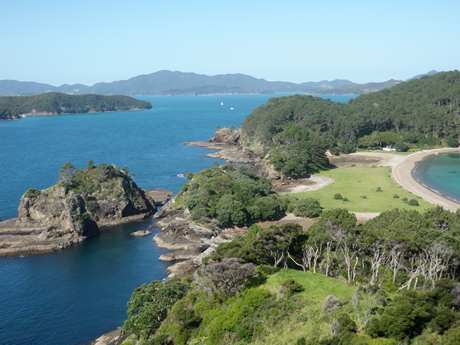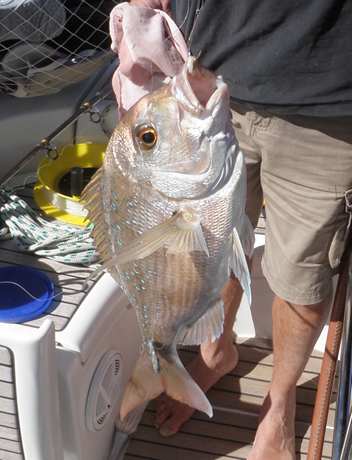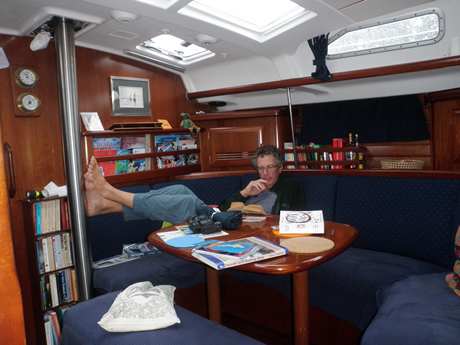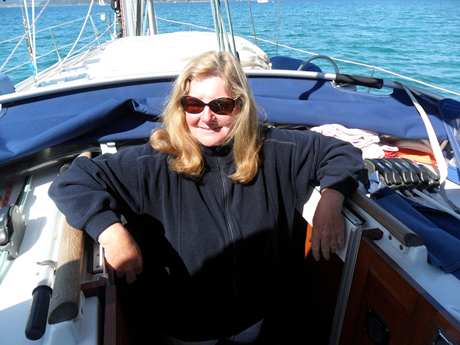Back to Opua S35 18 E174 07

|
We have really enjoyed our stay in Gulf Harbour. It is
safe, clean and very well managed with most services we needed on the doorstep
at (by Uk standards) very reasonable rates. The great thing was that it was just
about 15 minutes drive from Whangaparoa where Lorraine's aunt lives so It has
also allowed us to see our New Zealand family fairly easily.
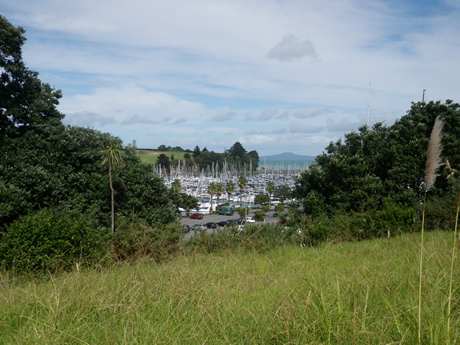 We have had our rigging inspected and
various minor problems ironed out, the sails were overhauled whilst we toured
South Island, our old and tired batteries for the services and bow thruster have
been replaced with very efficient new sealed ones and we have bought a new small
outboard for back up and harbour puttering. Unfortunately we also had to buy a
new gas bottle because we cannot get our camping gaz bottles
or our fairly new and excellent American fibreglass bottle filled here
as they don”t meet New Zealand
regs. We didn't want to pay the Chandlery price for an aluminium bottle but finding a steel
one proved quite a task as it seemed that every gas
bottle in the country was being bought up to help with power needs following the
earthquake in Christchurch. We found one eventually, now installed and just have
to do without whilst it is being filled. The boat now has an array of five
different gas bottles and from what we have read it seems that Indonesia will
have yet different requirements – we may have to build and extension for
carrying gas bottles!
Since our visit to the narrow guage railway in Driving Creek we have been watching the landscape more carefully as we sail past. The potter who constructed the railway is an ardent environmentalist and is intent on protecting/restoring indigenous species. He has bought 60 acres of hillside and is gradually removing all introduced trees, mostly pines, by stripping off the bark and leaving them to deteriorate and fall. Alongside this the native beech is being protected and kauri trees have been planted in their thousands. There is an ongoing programme to rid the area of the possum which was introduced from Australia, the possum proof fence is much in evidence here as it is across New Zealand. In this 60 acres there is noticeably more bird life and the hillside is full of original New Zealand trees and tree ferns but it has needed total dedication and determination to achieve this. If restoration is to take place on a more major scale it will take much longer to achieve than the degradation that was caused by stripping the forests for timber during early settlement by Europeans. The indigenous versus introduced species argument is a thorny one. Our first stop going north will be Kawau Island which is very beautiful and much visited but is covered in non-native species which were introduced by a previous Victorian governor when he lived there, they still have the wallabies he introduced – the monkeys and such like have died out. The sail up to Mansion House Bay on Kawau (again!) was uneventful but the following day was a little more exciting. We had planned to stay at Whangarei (pronounced Fongeray) for the night. The forecast was for light winds but with a swell created by the remains of a cyclone building swells to 4 metres. Although large the swells were not too concerning and we fished as we went north. As we approached Whangarei two surprises awaited us.
First the fishing line went tight and with little effort we pulled in …....a 5 foot shark......Aaagh! (Can't print what we actually said). It was surprisingly docile, swimming forwards at the speed of the boat to lessen the pull. We were in a complete dilemma as to what to do. As we wound in the line the shark first hid under the dinghy then it was alongside but before we could take any action the line broke and the decision was made for us. We were both sad that the creature should have ended up with a hook and some line dangling from its mouth. However, our fishing book tells us that with the shark's own bodily fluids and the salt water the hook will rust quickly away and there will be no long term damage. We sincerely hope so as it was a fabulous specimen, very streamlined and really beautiful with a vivid dark blue top and white under parts, a blue shark we believe.
The second surprise was the swell starting to increase and increase as we got closer to the narrow entrance to the river that runs up to Whangarei. Two other boats were making their way in, one was about half a mile ahead of us and we suddenly realised he had turned around and was coming back out. The reason was obvious, the waves were reaching over 4 metres in the shallows and then breaking violently on either side of the channel and apparently further up in the channel itself. The decision to continue north overnight was unwelcome but an easy one to make. As soon as we were in deep water again the seas became smaller. Even so, reflected waves from the rocky coastline were rebounding more than a mile offshore to cause some quite confused seas.
We arrived off one of the islands in the Bay of Islands just before dawn. We crawled into a safe anchorage and a welcome bed. The Bay of Islands is just as wonderful as the Hauraki Gulf but on a smaller scale, with many beautiful and well protected anchorages.
This was taken from the top of Roberton Island, one of the many that are nature reserves but with excellent tourist amenities. These are the responsibility of the Department of Conservation which must be one of the prides of New Zealand providing well controlled access for its people and visitors.The work of the Department of Conservation puts to shame the attempts of the authorities who look after the National Parks in the UK. We even witnessed a helicopter helping to unload a sand barge after a land slip at Kawau, it was being used to minimise the impact of heavy machinery.
Thanks to the work of the Ministry of Fisheries here, there are plenty of fish and fishing is an even bigger pastime than in the UK. There are always fishermen on the water with boats ranging from the kayak to the gin palace and rods from the simple reel to the battery powered that can pull up big fish like teriaki and giant grouper from 400 metres deep.
Happily for us there are also plenty of snapper in the sea that make for excellent eating and are fun to catch. They like to tease by tugging at the bait and can remove it in seconds with their fierce little teeth but every so often one makes a mistake and we benefit! Being full of sharp spiny fins, landing them without being speared is quite an art – we're learning fast.
We have now retreated to the marina in Opua where we have had some final maintenance work done on the engine. Lorraine has spent a few days on the sewing machine making an awning for the front of the boat to protect the hatches both from the fierce sun and the heavy rain that we are expecting as we move up to Northern Australia and into the Indian Ocean. It has been fun catching up with our Pacific “puddle jump” friends including fellow Brits Chris and John of Sara 2, Jeremy and Cathy of Sal Darago and Anton of Shayele. The yachts that came here in the spring are all gradually returning ready for the off as the days draw in and the temperature drops. We are already having to wear long trousers and fleeces in the evening.
Sorry as we shall be to leave here it is definitely time to prepare for departure. |
